Enter a search term above to search our website
Pages
News
Star Objects
Tara Johnston has written about her experiences volunteering at Perth Museum and Art Gallery over the summer, working under the direction of Anna Zwagerman, whilst studying at Cardiff University for an MSc in Conservation Practice.
One of the first tasks I was involved in was aiding in the move of the 3,000 years-old, Carpow Logboat. While daunting to be thrown into such a big move, it allowed me to see large-scale conservation in action. The Carpow Log boat is a Bronze Age boat that was found in the River Tay in 2001. As the boat was waterlogged it was important to treat the object initially. Conservators at the time used a PEG treatment which is commonly used in conservation to help protect waterlogged wood from shrinking, cracking, and further deterioration when it dries. The Carpow Log boat, however, is very large at 9m long and was cut into three pieces in order to aid in conservation efforts. As this was the only way the boat could be accommodated into the freeze-drier to finish its treatment. This treatment was beneficial but also had some long-term implications. Over the years the Carpow Log boat has been on display it has aged with fluctuations of temperature and humidity. The weight of the wood makes it naturally want to flatten out, which is only increased by fluctuation in the environment. Due to the boat being in three sections, these have started to shift and warp the wood pieces separately from one another. Recent assessments of the boat have noted these changes which have caused a misalignment between the tops of the boat sections, causing some supportive fills to fall out. After further heat treatment to tighten the lineup of the sections with each other, the current display supports will be replaced with a more supportive cradle mount, to help prevent these changes re-occurring and to stabilize the boat for the future.
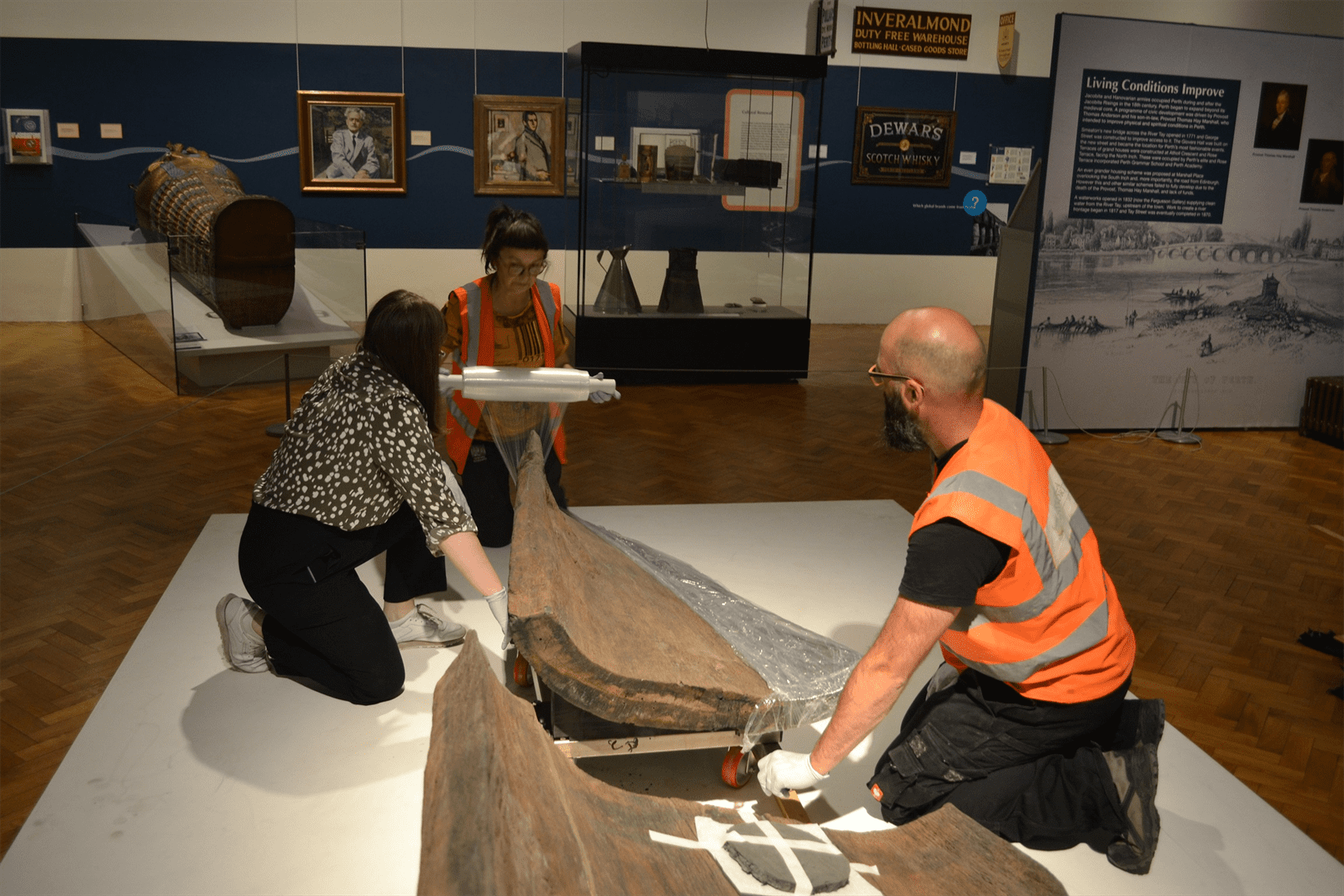
The task of sending the Log boat for conservation was a large undertaking. It involved the boat moving from the History Gallery in Perth Museum & Art Gallery to the National Museum of Scotland’s (NMS) Conservation Studios in Granton, Edinburgh. This daunting task was meticulously undertaken by Graciela Ainsworth Sculpture Conservation, with the help of the NMS conservator, Charles Stable, aided by Perth Museum staff.
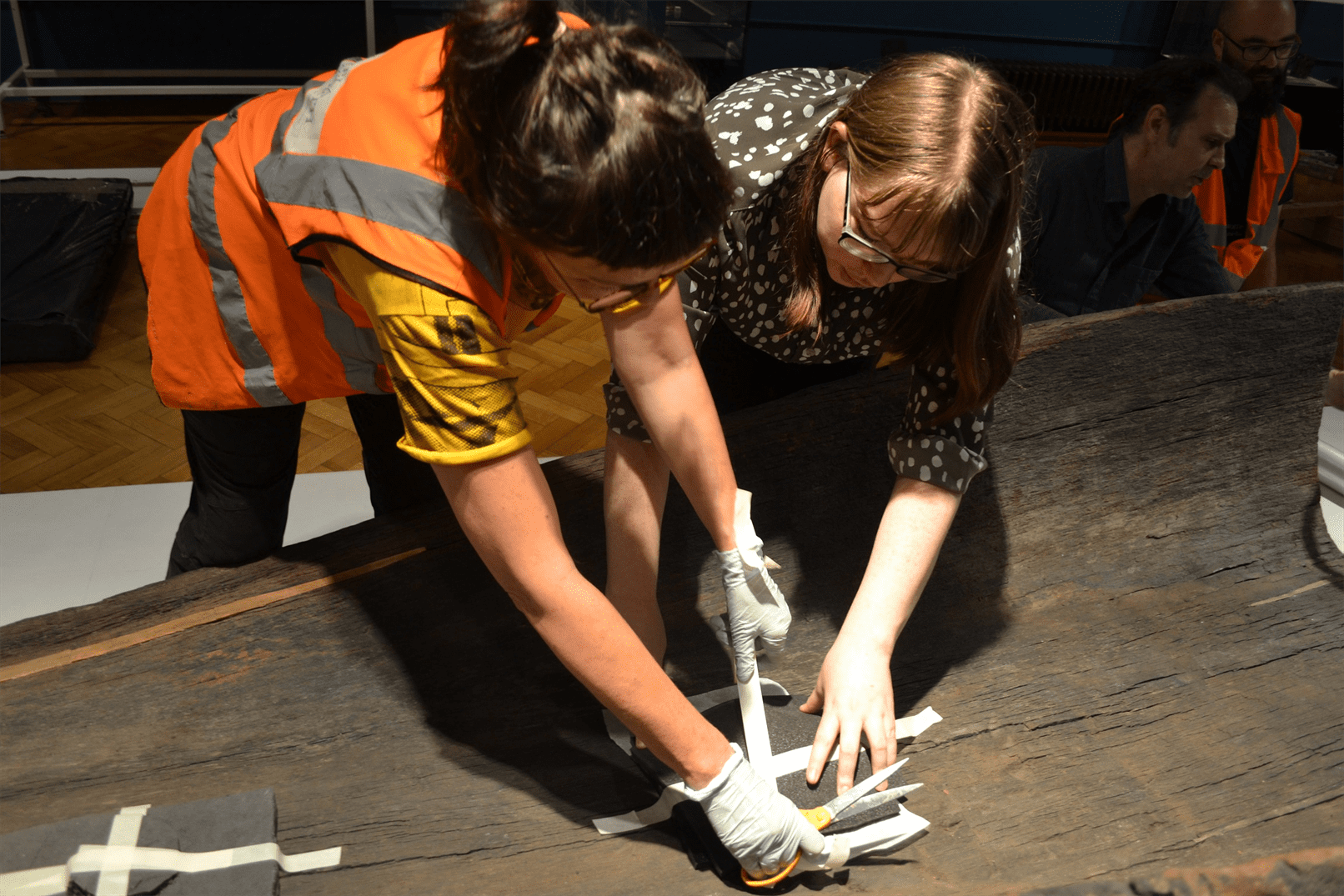
I was able to take part in helping the move of this large section. One of the first things that was done to the boat was that delicate holes in openings in the wood were filled with archival tissue. Other raised areas that were delicate were covered in foam, to support them in the move. After the delicate and fragile areas were supported and protected the entire section was wrapped with plastic film. This served two purposes, it protected the sections from pieces falling off, serving as a protective layer from abrasive forces, and protected the boat from the rain.
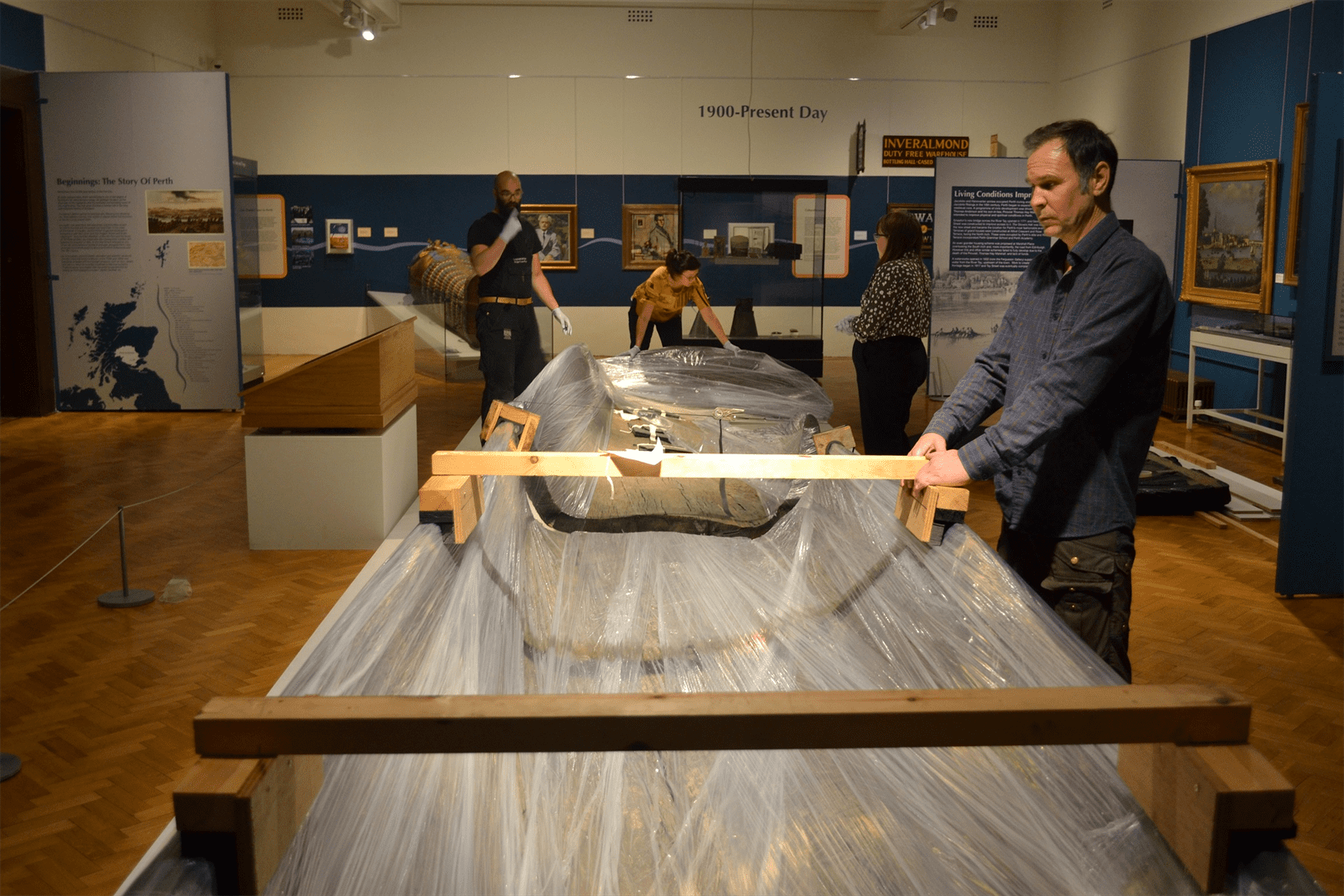
After all the layers of wrapping were added support beams and straps were put in place on the two main sections. These beams helped to support the shape of the boat during its transportation.
The next day the actual move of the Log boat sections took place. This well-planned and orchestrated task involved the sections being wheeled out on their undercarriage from the History Gallery to the front door where a large wooden platform had been built. The two large boat sections were then attached to a crossbeam with straps and picked up by a crane and placed on a HI-AB. The large sections were placed on the trailer, and afterwards a wood frame was built around them, which was covered in tarp, to protect it from road travel and any inclement weather that might arise. The smallest section of the boat was taken to Granton in a transit van. The boat is now in the conservation studio while remedial treatment takes place.
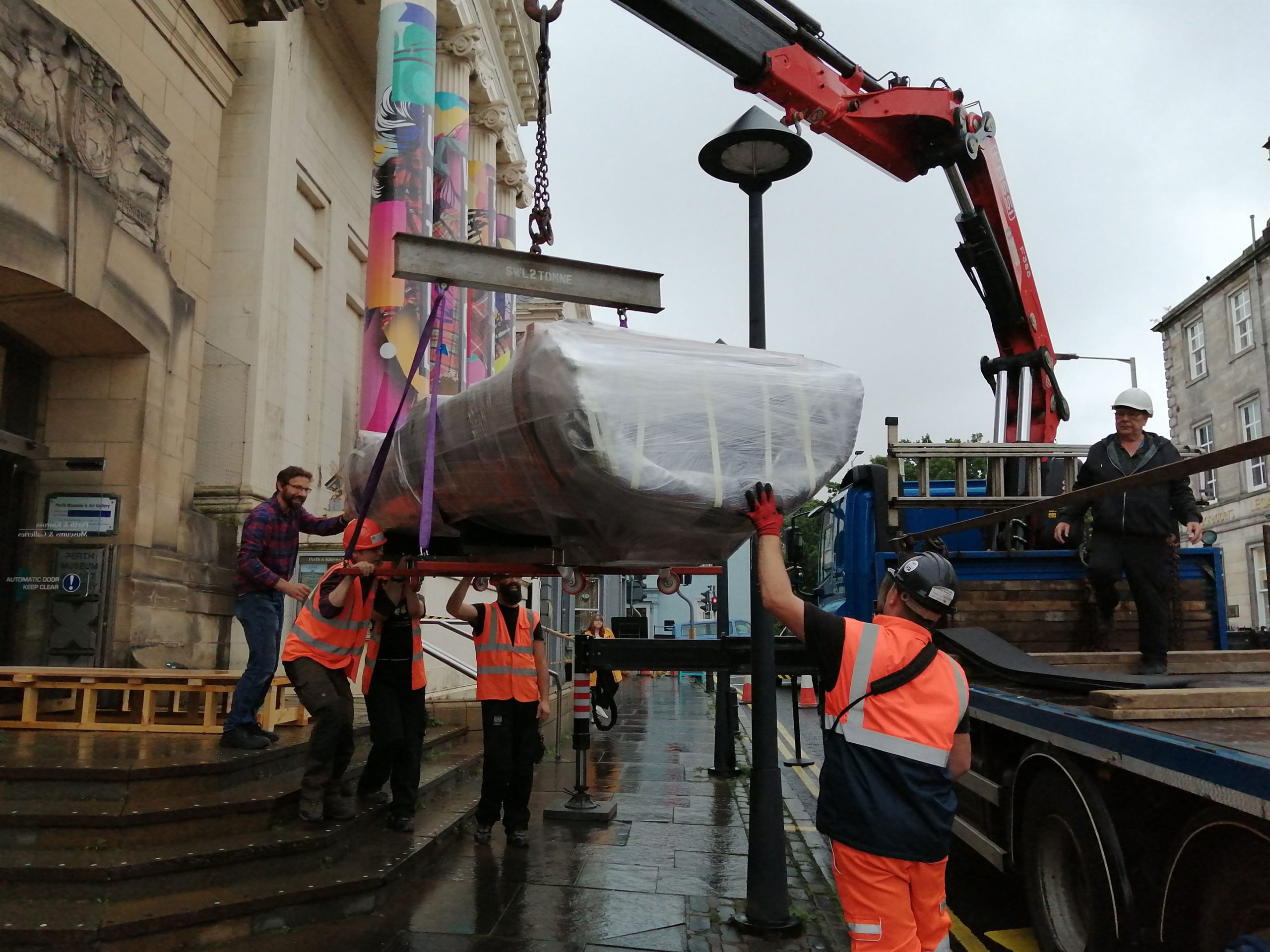
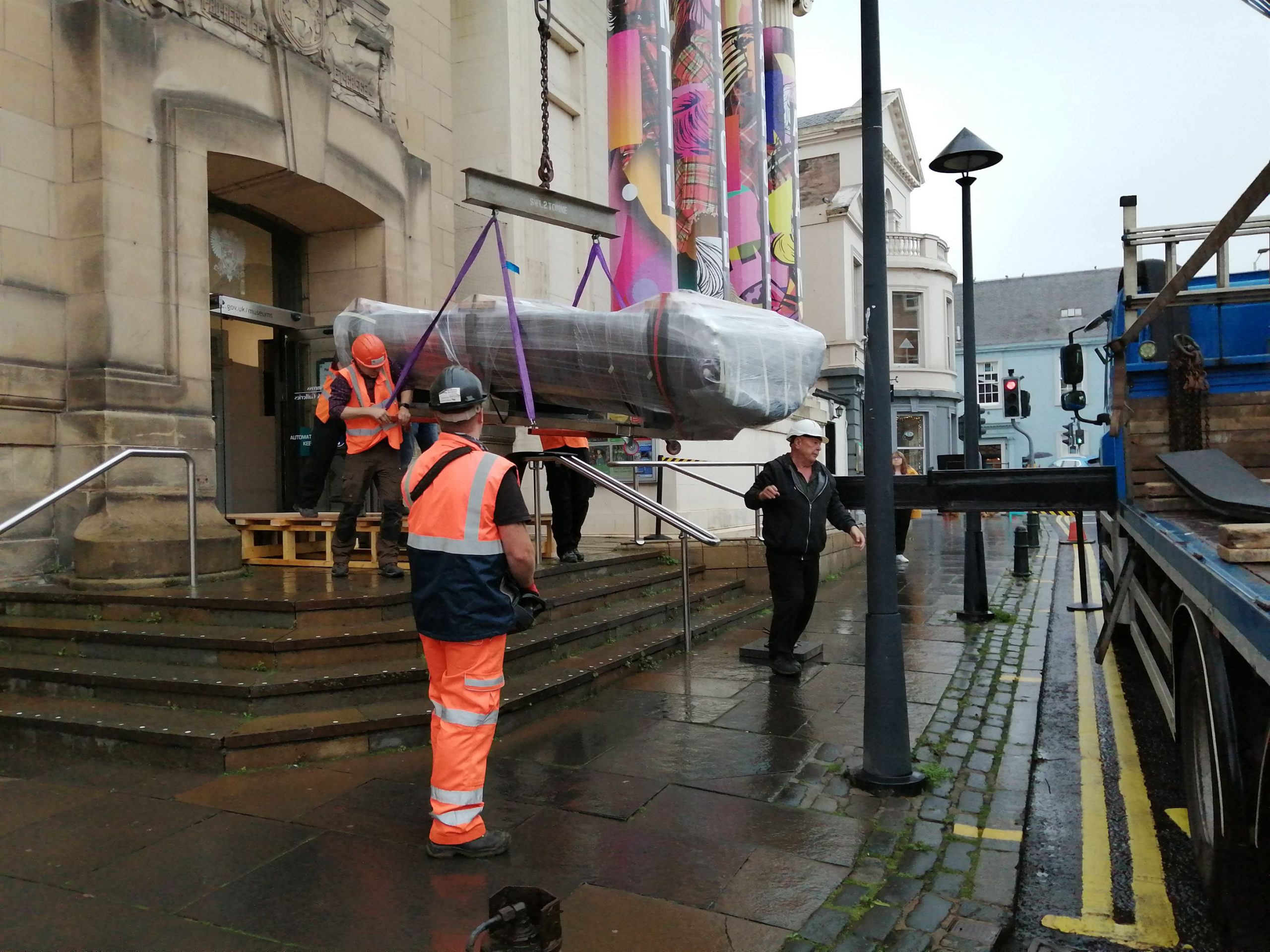
I was grateful to be able to help aid in such an important and delicate move. The movement of this boat allowed me to see more large-scale conservation in action and all the thorough decisions and pre planning that need to be made to help it run smoothly. I am excited to see the next stages in the life of this boat and its future in the new Perth Museum.